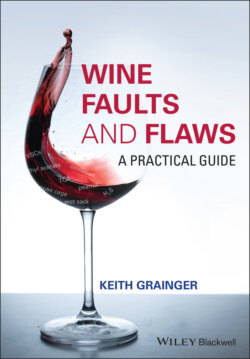Читать книгу Wine Faults and Flaws - Keith Grainger - Страница 94
2.11.2 Blind or Sighted?
ОглавлениеThere is no doubt that knowing the identity of the wine to be tasted impacts a taster's perception. There are good reasons why the taster might wish to know the details of the wine being tasted. First, the wine is immediately placed in context, including location within a region, i.e. the sense of place, and the characteristics of the vintage in question. What may be considered a flaw may be explained by the context, including geographical location. For example, many Italian red wines possess high levels of volatile acidity, which is part of their Italian identity. Second, knowledge of the region and/or producer, e.g. their production methods and ‘philosophy’, can help the taster understand the wine. As discussed in the Introduction, wines from some regions and producers display characteristics that might be regarded as faults or flaws in other wines. Third, knowledge of a wine will help the taster place it at a particular point in its life‐cycle. Is it at its best? What is the potential to age based on the reputation of the producer, region, and vintage?
